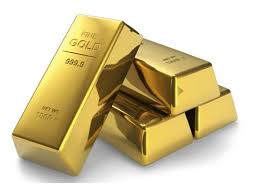While gold has a timeless allure, its extraction is not without its challenges. Traditional mining methods often come at a significant environmental cost. The use of toxic τιμη χρυσου 14κ ανα γραμμαριο σημερα like cyanide and mercury, deforestation, and water contamination have raised serious concerns about the environmental impact of gold mining.
In addition, the ethical implications of gold mining, particularly in conflict zones, have garnered attention in recent years. “Conflict gold” refers to gold that is mined in war-torn regions, often under exploitative and inhumane conditions. International organizations and ethical brands are working to address these issues through initiatives like the Responsible Jewellery Council (RJC) and Fairmined certification, which promote sustainable and ethical gold sourcing.
The Future of Gold: Digital, Sustainable, and Expanding Horizons
As we look to the future, gold’s role may expand in unexpected ways. The rise of digital currencies, such as Bitcoin, has sparked comparisons between the two assets. While Bitcoin is often touted as the “new gold,” many investors still view physical gold as a more stable and tangible store of value. In this sense, gold’s enduring appeal lies in its physicality and the psychological comfort it provides as a tangible asset.
At the same time, efforts are underway to make gold mining more sustainable. Technological innovations in recycling and extraction methods, such as bioleaching and the use of microorganisms to mine gold, may reduce the environmental impact of gold production. In the future, we may see more gold sourced from recycling, further reinforcing its value as a finite resource.
Moreover, as the demand for renewable energy increases, gold could play a more significant role in advancing green technologies. Its use in solar panels, batteries, and other clean energy systems may help drive demand for the metal in ways that support global sustainability goals.
Conclusion: Gold’s Enduring Legacy
Gold’s journey through history is a testament to its unparalleled value and significance. Whether as a symbol of divine power in ancient Egypt, a foundation of global trade during the gold standard, or as a safe haven in times of economic uncertainty, gold has remained a constant in human civilization. Its intrinsic qualities—scarcity, durability, and beauty—ensure that it will continue to captivate and serve humanity for generations to come.
As the world changes, so too will gold’s role, adapting to new technologies, evolving ethical standards, and shifting economic landscapes. Yet, despite these changes, one thing remains certain: the allure of gold, with its timeless beauty and enduring value, will never fade.


